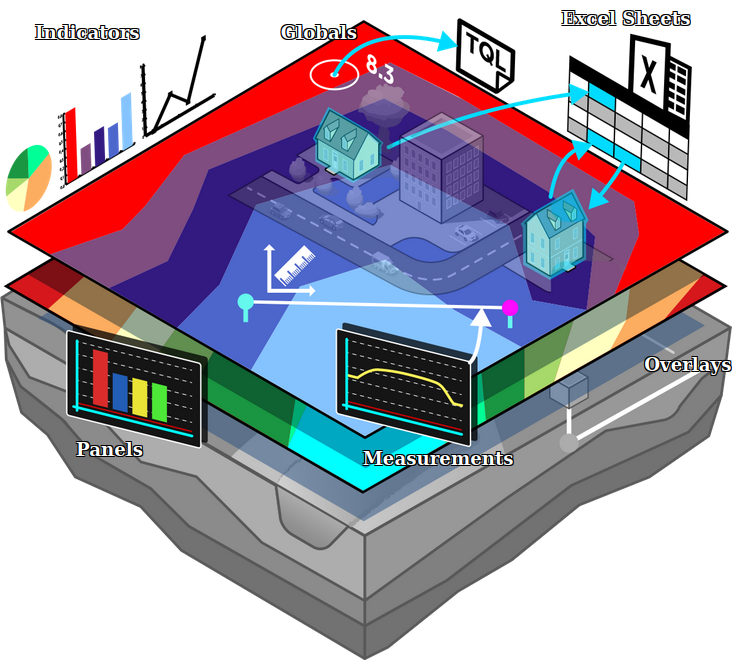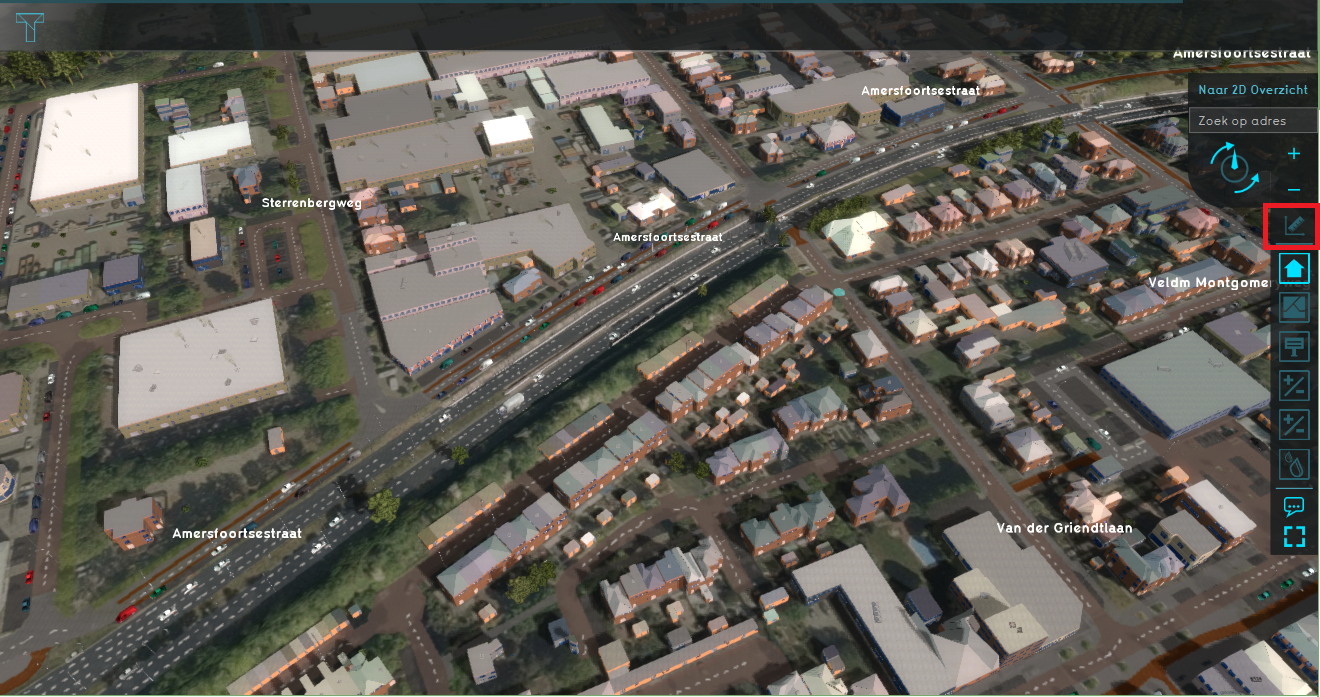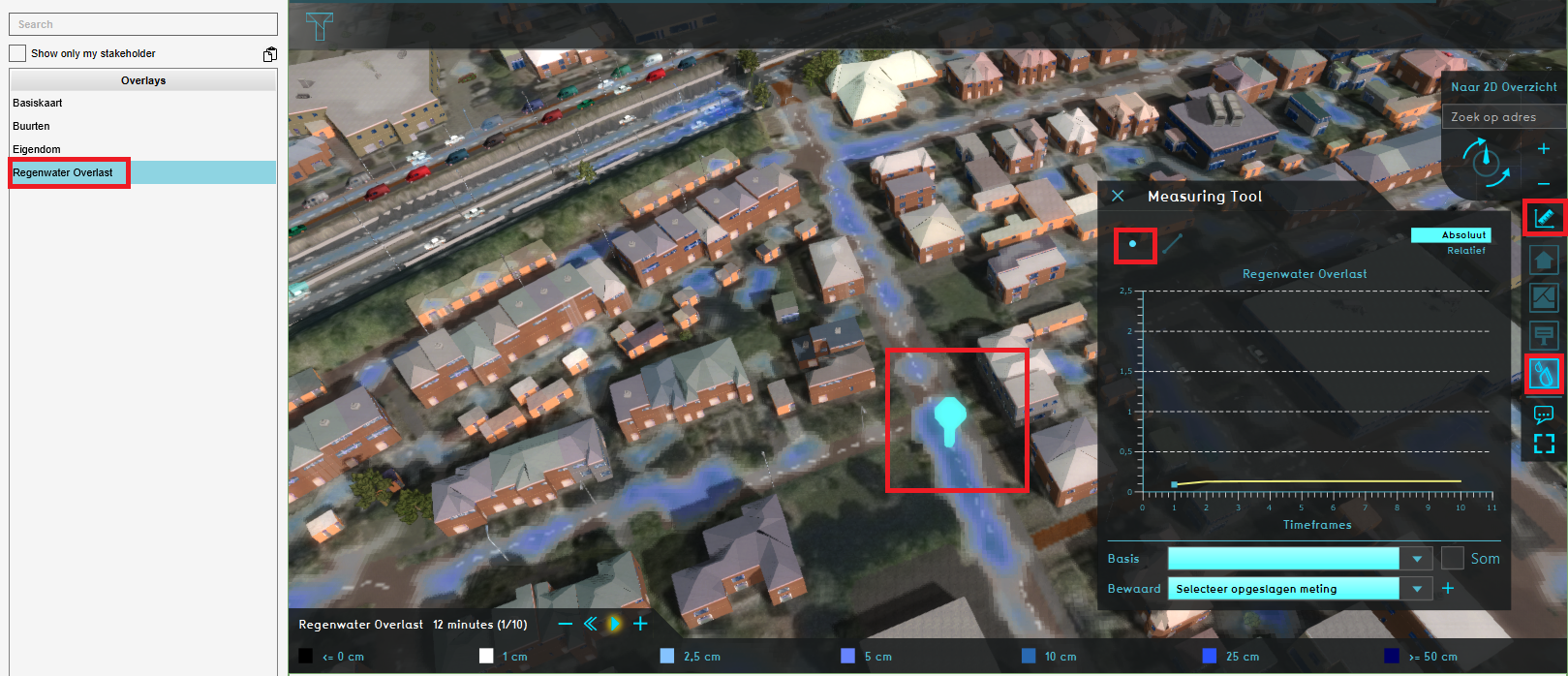Measurement: Difference between revisions
Jump to navigation
Jump to search
No edit summary |
|||
| Line 13: | Line 13: | ||
===Adding a measurement=== | ===Adding a measurement=== | ||
Measurements can be added, inspected, imported and exported using the [[measuring tool]]. It is accessible in the navigation panel, by clicking on the icon above the overlay bar. | Measurements can be added, inspected, imported and exported using the [[measuring tool]]. It is accessible in the navigation panel, by clicking on the icon above the overlay bar. | ||
<gallery widths=300px> | |||
File:Measuring_tool_location.PNG|The location of the measuring tool in the overlay bar. | |||
File:Point_measurement.PNG|Making a point measurement in a Rainfall overlay's grid. | |||
</gallery> | |||
{{article end | {{article end | ||
Revision as of 10:52, 17 January 2023
A measurement is the Tygron Platform is an item which allows users to record and inspect spatial data. Measurements can be positioned in the 3D world and are applied to a grid overlay or to an attribute related to a specific grid overlay.
Measurements are accessible by
Types
Currently three types of measurements are supported:
- Point measurement, to inspect the value of a grid overlay for a specific location. Optionally displays values over time in case the overlay supports timeframes.
- Line measurement, to inspect the variation in values of a grid overlay on the line drawn.
- Object measurement, to inspect the value of an attribute of an object related to a grid overlay. Optionally displays values over time in case the overlay supports timeframes.
Adding a measurement
Measurements can be added, inspected, imported and exported using the measuring tool. It is accessible in the navigation panel, by clicking on the icon above the overlay bar.


